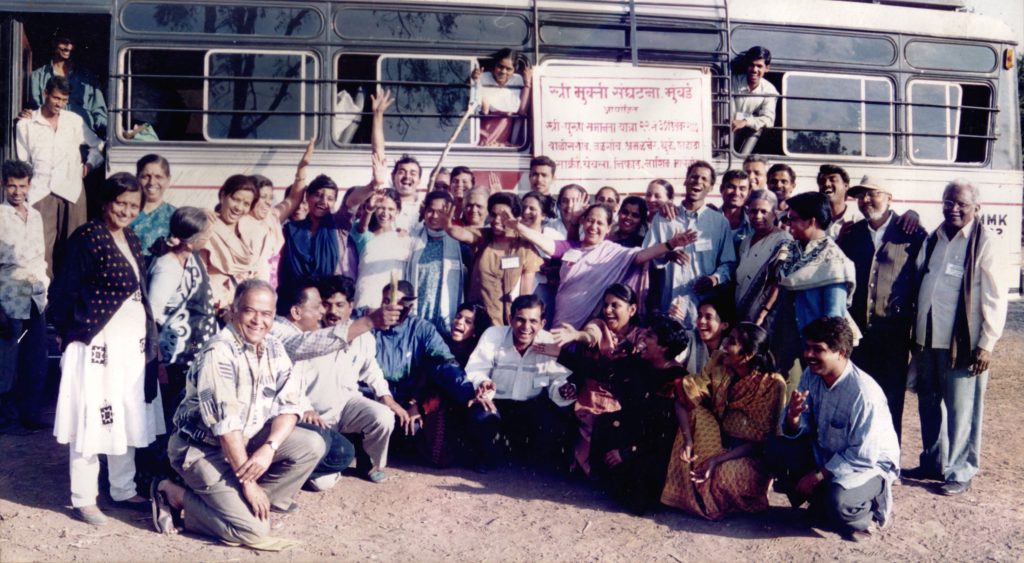
The United Nations declared the year 1975 as —International Women’s Year and shortly declared it as —United Nations Decade for Women . In this context, women’s organizations from all over the world started discussing the issues that women face and its extensive and far reaching effects could be seen in the far corners of India.
In October 1975, a conference on “Stree Mukti Sangharsha Parishad” (United Struggle for Women’s Liberation) was organized in Pune. In spite of the emergency declared at that time in India, over 600 women from interiors of Maharashtra participated in the conference. The women were from all walks of life, workers, daily wagers, farm labourers, tribals, devdasis, and women from middle class.
In Mumbai, some young women got together and started preparing for the conference by making posters, exhibitions, songs, pamphlets, and a manifesto of women’s liberation. After the conference, this same group of women started the Stree Mukti Sanghatana – or Women’s Liberation Organization.
A clear picture emerged of the popular media which seemed more focused on the old traditional customary roles of men and women and were laughing off the more deep rooted problems that women face. The constitution of India gives equal rights to both men and women; however, in reality the scene was completely different. In every aspect women were given a secondary position. The volunteers and activists in the Women Liberation Movement decided to use this same popular media to reach out to the general public. It was heartening to see the common people accepting and empathizing with the cause.
Traditional art forms are a very powerful medium to reach in the far corners and interiors of our country. So these were used to reach out to the people. In the beginning, awareness was the main focus of the organization. Using the Kalapathak (Cultural Troupe) as a medium, the activists reached into the interiors of Maharashtra.
The women’s liberation movement is not about the superficial images of independence. To understand and accept independence in its totality, it’s very important to change the intellectual, political, economical, social, cultural mindset of the people. This movement is focused on these aspects, and understands the importance of it reaching every section of the society.
Kala Pathak
SMS has a renowned cultural troupe in SHAHIRI tradition of Maharashtra which has been performing since 1975. Gradually people started understanding what “Stree Mukti Sanghatana” was all about. The play “Mulgi Zali Ho” (A Girl Is Born) written by Ms. Jyoti Mhapsekar created history. The play had far reaching consequences and girls from all walks of life started enthusiastically participating in the organization. This play has been translated into 7 Indian languages including Hindi, Kannada, Gujarati, Telugu, Urdu, English and Sanskrit. Women from these states of India perform plays and promote the powerful message of equality. The play has had positive and effective influence on men too.
SMS proudly claims “Mulgi Zali Ho” as its manifesto. The women’s Kalapathak is the pride of the organization.
YATRA
The cultural troupe traveled into the interiors and nooks and corners of the country highlighting the message of gender equality and gender sensitivity.
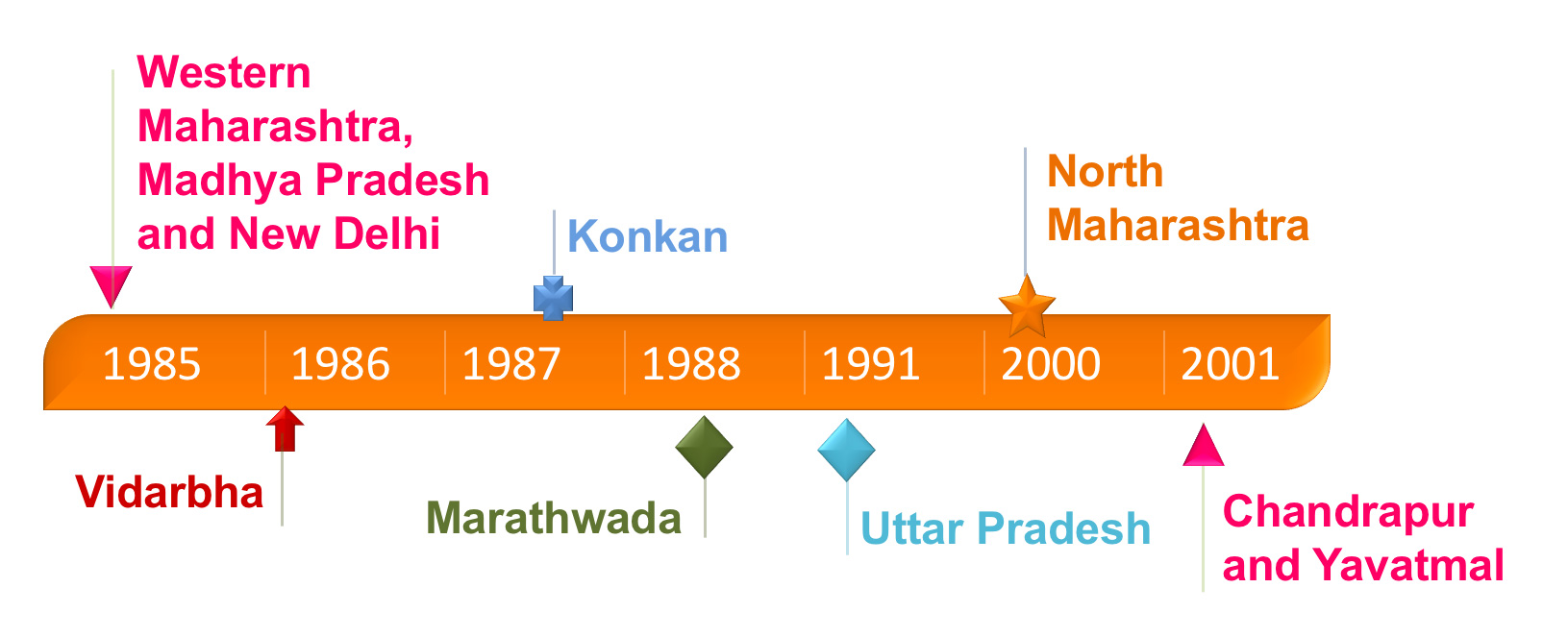
From 1985 to 2001 the cultural troupe traveled all over Maharashtra and Central and North India.
KALA PATHAK YATRA
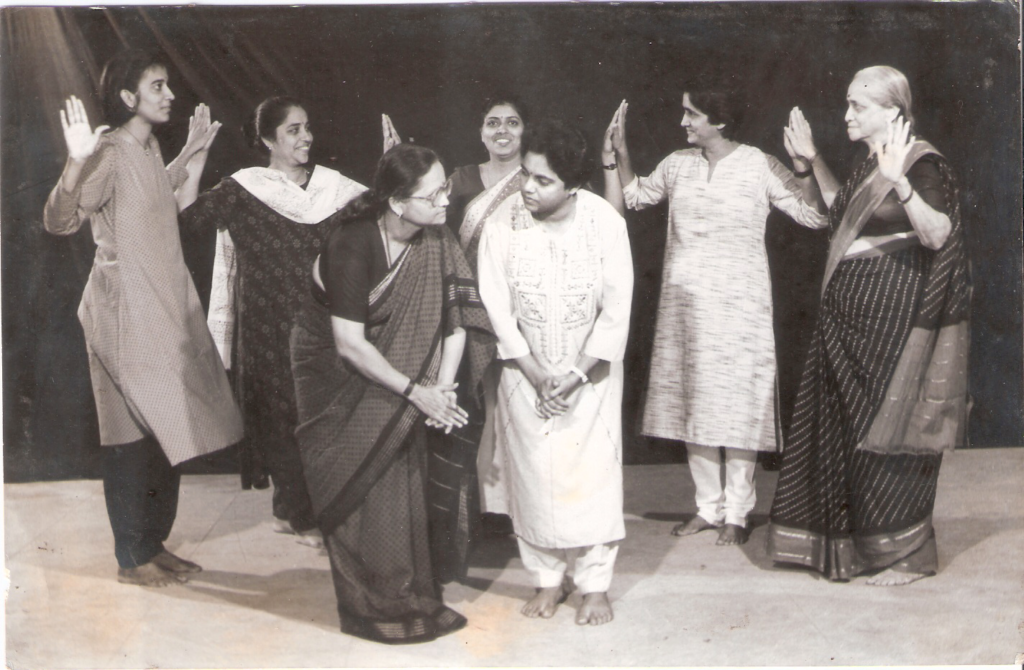
MULGI ZALI HO! – 1983
Playwright & Music: Jyoti Mhapsekar
Director: Vinod Hadap
In 1983, SMS launched its flagship play, Mulagi Zali Ho (A Girl is born). Written by Ms. Jyoti Mhapsekar and enacted by women activists of SMS, this musical satire is translated in 8 Indian languages besides English and is being performed by 100+ groups in India.The play has been performed internationally at the 3rd International Women Playwrights’ Conference at Adelaide in July 1994 and at NGO forum in Beijing in Sept’ 1995. In India, among other places, the play has been staged at the Lal Bahadur Shastri Academy -Mussoorie, Police Academy Hyderabad, and many prominent Universities and colleges of India. The play is also a part of syllabus of two universities and has been telecast and broadcast several times. It is also used by many organizations as a training tool.

HUNDA NAKO GA BAI – 1986
Playwright & Music: Jyoti Mhapsekar
Director: Vinod Hadap
In 1986, the play ‘Hunda Nako Ga Bai’ (No dowry please!) was staged by SMS and written by Ms.Jyoti Mhapsekar for young activists of SMS .
Dowry is a social evil with its roots in the desire for instant money, matchmaking, marriage bureaus, the aspirations of young girls for a superior husband and the caste system. In India nearly every day, atleast one bride is burnt because of dowry customs. Inspite of the anti-dowry law and subsequent amendments, the evil of dowry still haunts the society.
The play throws light on these practices and strives to find solutions such as social intervention, community participation in the anti-dowry movement etc.
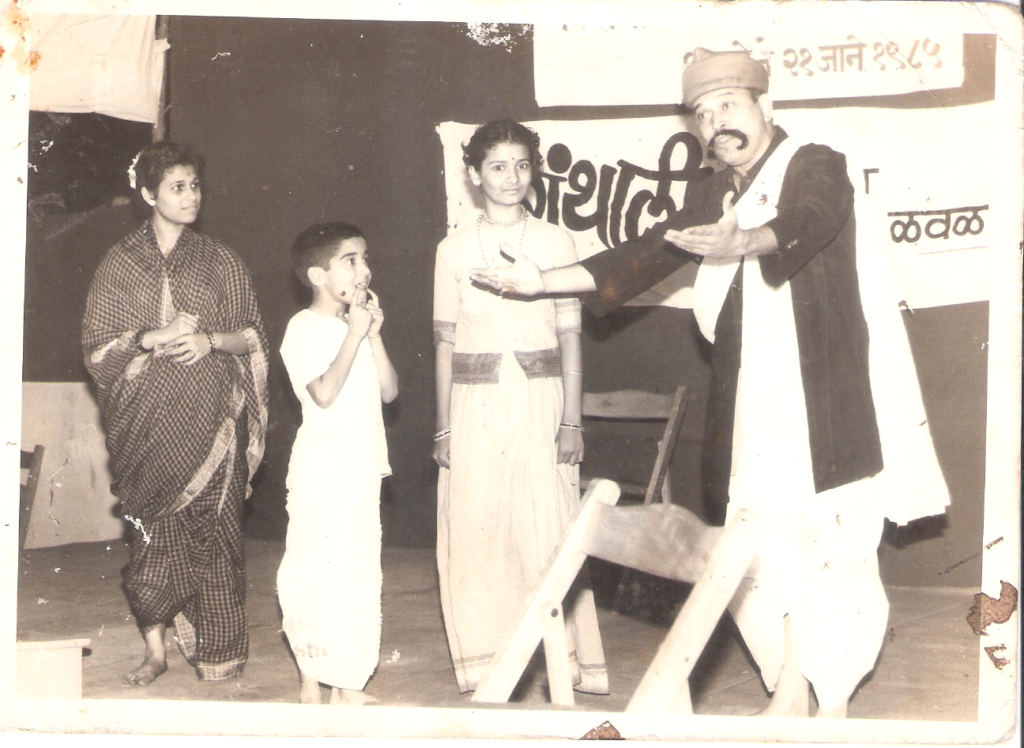
JWALASHIKHA PANDITA RAMABAI – 1985
Playwright: Sanjivani Kher
Director: Vinod Hadap
In 1985 the play based on the life of the 19th century reformer, Jwalashikha Pandita Ramabai, tells the story of Pandita Ramabai who devoted her life for women’s education and helped women in distress. She had to suffer acute isolation from orthodox Hindu Brahmin Society in which she was born.
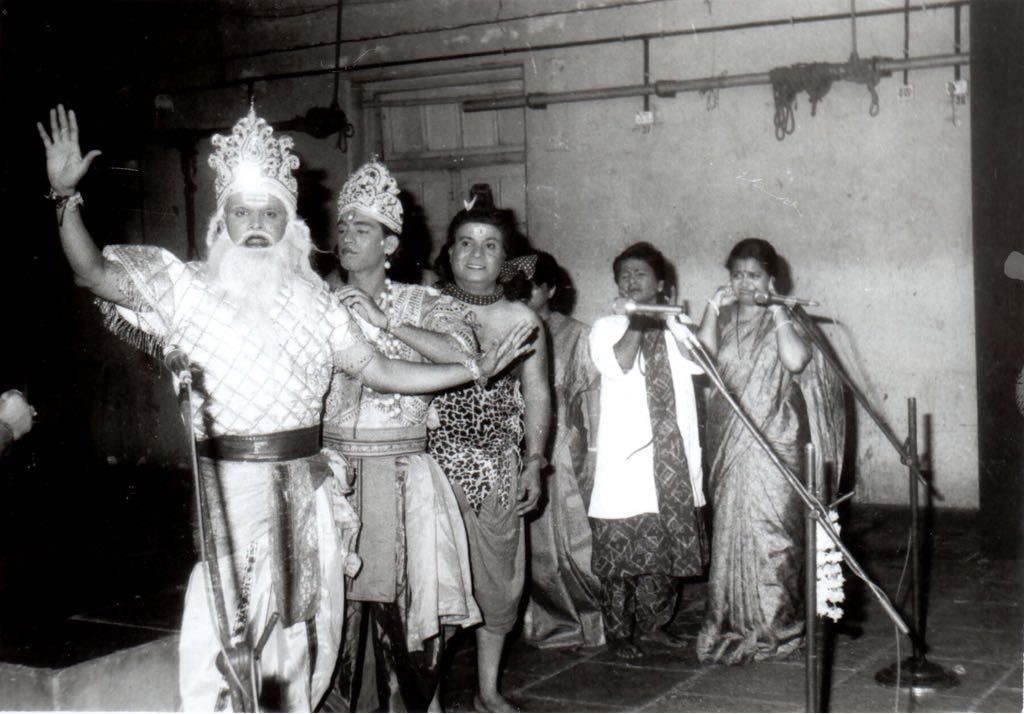
BAAP RE BAAP! – 1994
Playwright & Music: Jyoti Mhapsekar
Director: Vinod Hadap
Bap Re Bap ! (Oh My God !). The play has been written by Jyoti Mhapsekar in 1994. It talks about another pressing problem in our society – preference to male child, the dwindling sex ratio in India, sex determination test , the PCPNDT (Pre-Conception and Pre-Natal Diagnostic Techniques) Act of parliament of India to stop female foeticides , and abortion rights…
The playwright uses Indian mythological characters to present these pressing issues in a lighter vein.
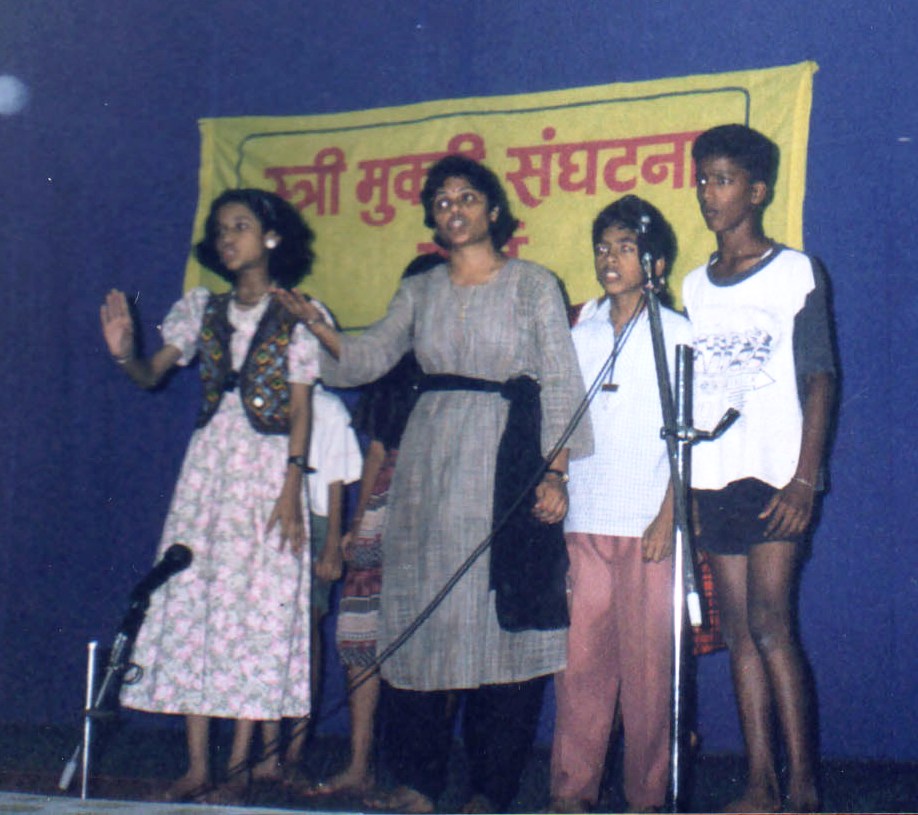
KASHASATHI POTASATHI – 1998
Playwright & Music: Jyoti Mhapsekar
Director: Vinod Hadap
Kashasathi Potasathi (Why? Just to fill the stomach). Written by Ms. Jyoti Mhapsekar in 1998, this is a play on child labour. It highlights the different types of child labour and its root causes in typical urban surroundings.
HA PRASHNACH CHUKICHA AAHE - 1979
Playwright: Rajiv Kalelkar
Director: Vinod Hadap
In 1979, SMS produced its first play, "Ha Prashnacha Chukicha Aahe!" (The Question itself Is Wrong!). The play was based on the problems faced by working women. The play revolves around an Industrial Estate where the women workers are denied the right to marry. The women unite and demand creche so that they can also get the right to marry, maternity leave etc. The union leader visits a women activist’s family. He is questioned by her husband about the long hours of absence and her duties towards her in-laws and other family members. She is in a dilemma having to choose between the two, the union work or her family.This play was first attempt of SMS to pose societal problems through performing art.
SAMATEKADE VATCHAL - 2011
Playwright & Music: Jyoti Mhapsekar
Director: Sushama Deshpande
The play depicts the history of reformers and revolutionists in the women's cause.
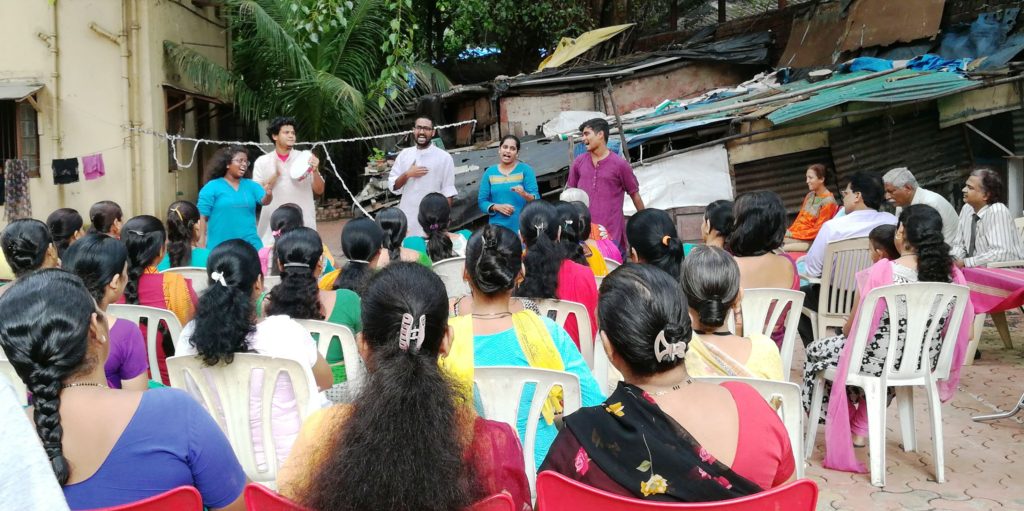
YE HAI MUMBAI MERI JAAN - 2008
Playwright, Music & Director: Jyoti Mhapsekar
The play depicts the problems of waste management and provides workable solutions for the same.
